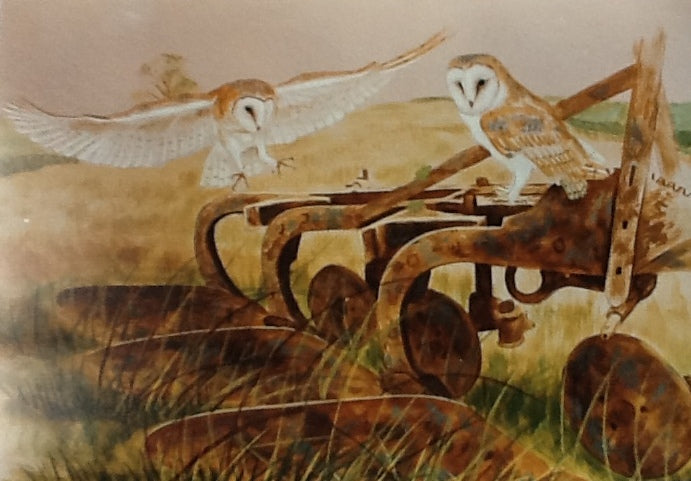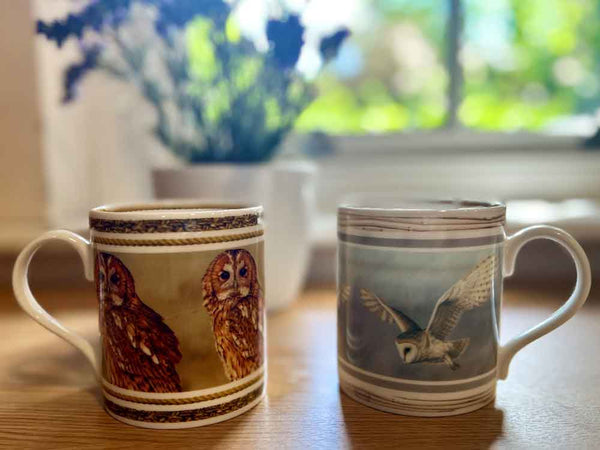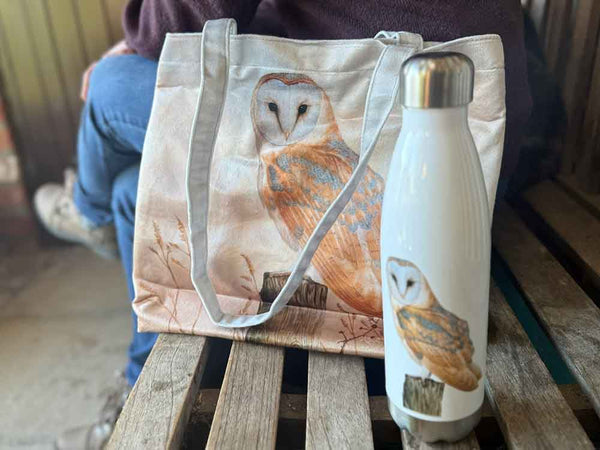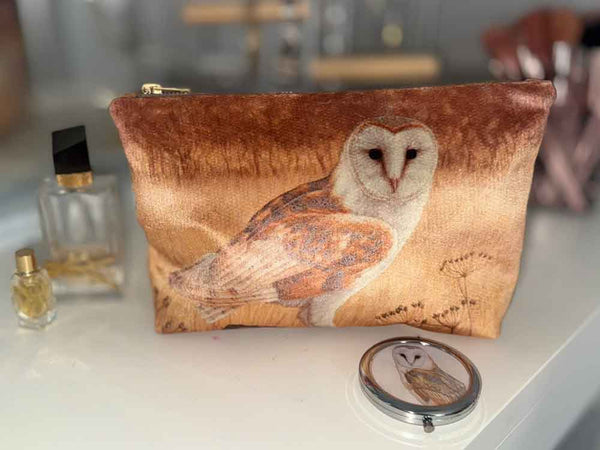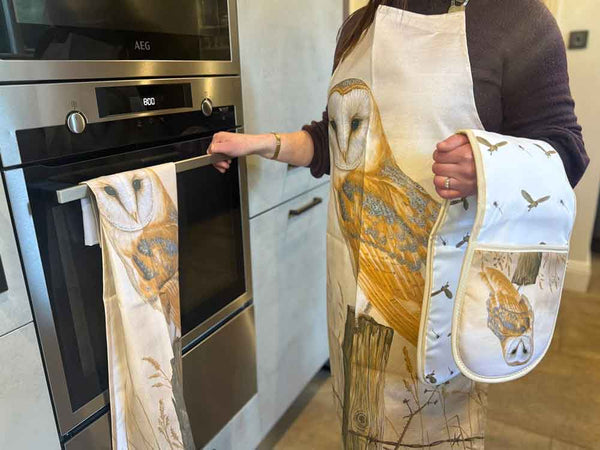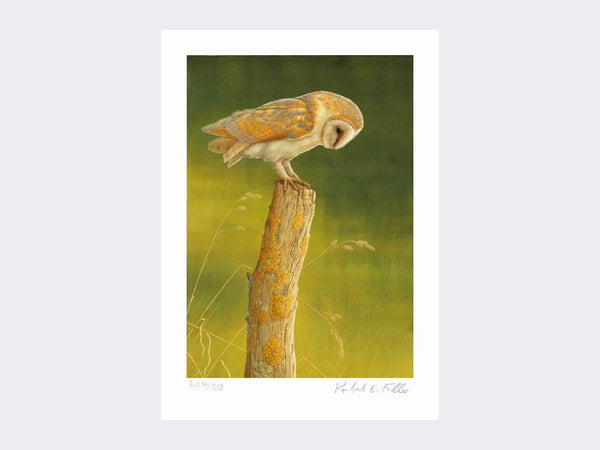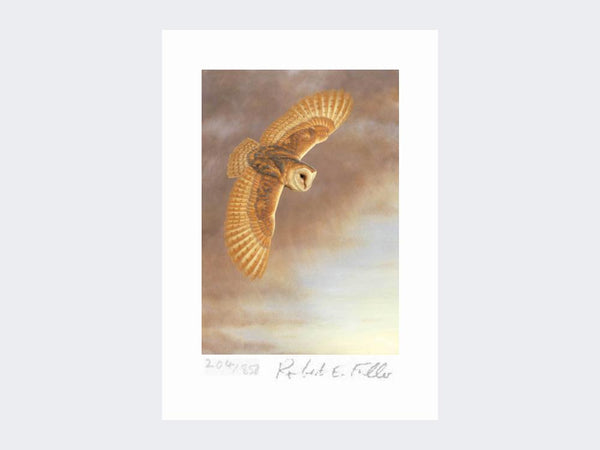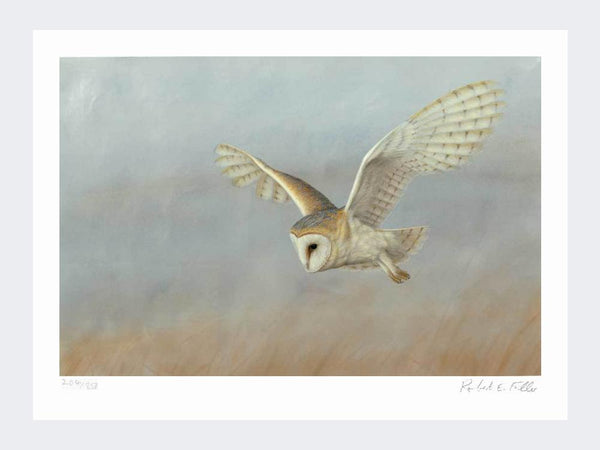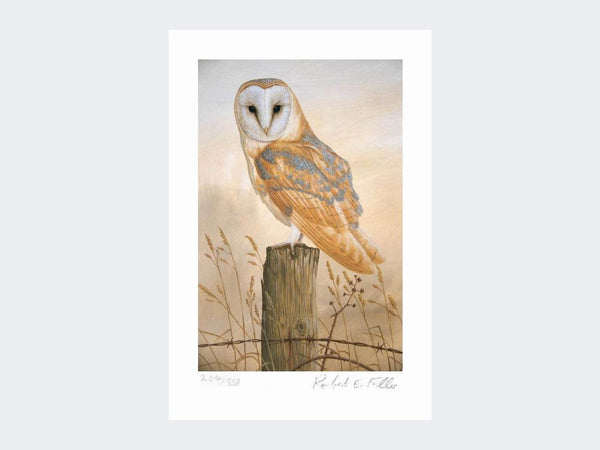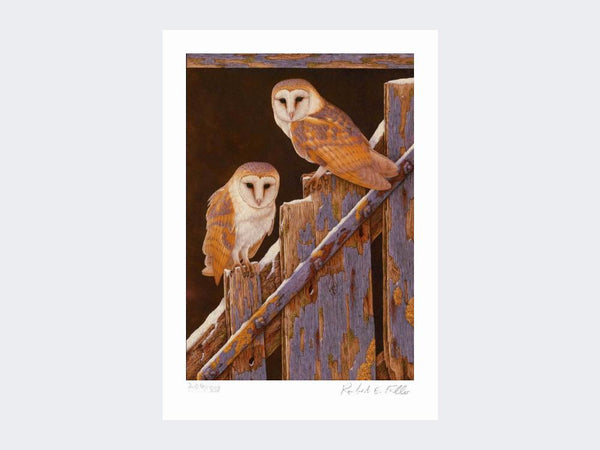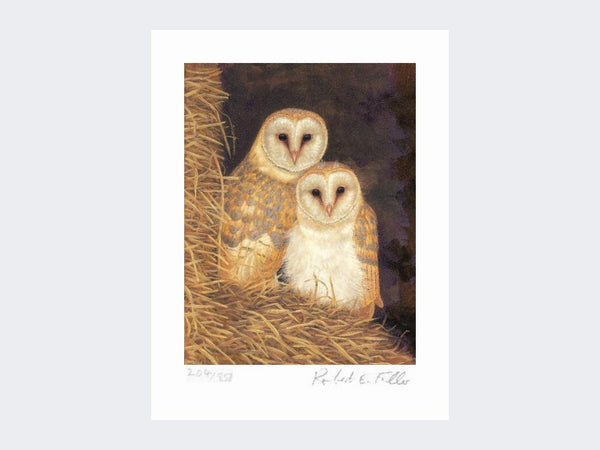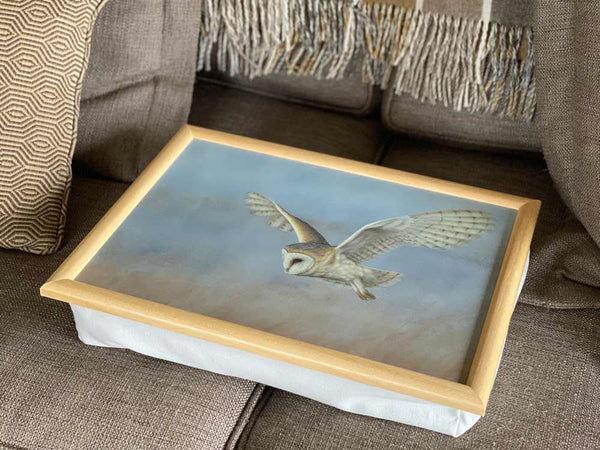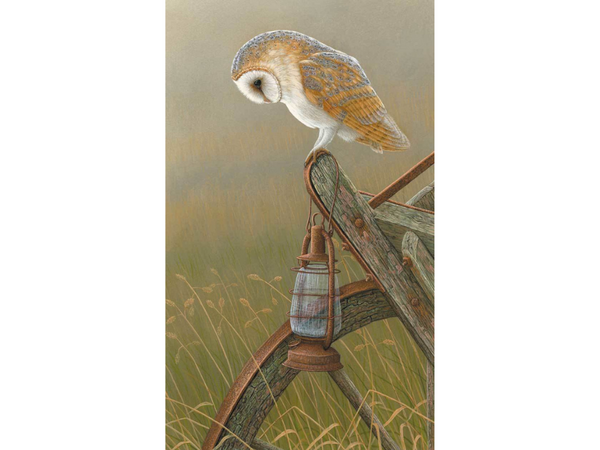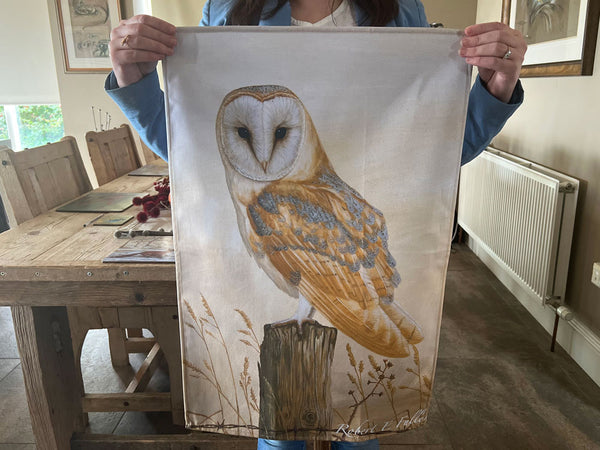
Earlier this month after undergoing surgery at York hospital, I came round from the general anaesthetic to see two nurses smiling down at me. I questioned them why they’d woken me up as I was just having a rather nice dream about barn owls. I work on my paintings of animals and birds all day so I suppose it is not much of a surprise that I dream about them by night. And it’s got to be said that there’s nothing quite as special as the sight of a barn owl gliding over a darkening landscape – even if it is only in a dream.
For the last three years, ever since 80 per cent of the population of barn owls living around my gallery on the Yorkshire Wolds died as a result of a severely prolonged and cold winter, the welfare of these beautiful birds of prey has been at the forefront of my mind. I have been fascinated with these beautiful birds of prey since childhood. I’m so passionate about them that I, along with several other like-minded individuals, set up The Wolds Barn Owl Group to boost the population of owls across North and East Yorkshire. Our main aim was to put up nest boxes for barn owls and advise landowners on how they can get these birds to thrive on their land. To date I have put up over 150 owl boxes across the Wolds. The project was born out of a need for natural nesting sites and suitable habitat. Dutch elm disease, which killed off so many trees that had once housed barn owls, is in part to blame, as is the habit of ‘tidy farming’, or felling the dead and dying hollow trees, which followed.
And so too is the fact that so many old barns, which were the favourite haunt of this bird of prey and even gave it its name, ‘barn owl’, have been converted for housing or have simply fallen down. But the main problem is habitat loss which has resulted in their main food supply slowly diminishing. Their staple diet, the short-tailed field vole, lives in long tussocky grassland and traditional hay meadows. But over recent years we have lost 97% of these traditional meadows, mainly because they have been turned over to grow rye grasses which are used for silage and have little benefit for wildlife. The size of the average field has also increased and many hedgerows and field margins, where these voles would have thrived, have disappeared. It’s getting to the stage these days that roadside verges are becoming one of the only remaining natural grasslands. In some areas they’ve become vital hunting grounds but this is a dangerous place for them to be and they are often knocked down by traffic. Despite all these challenges, barn owls are widespread and can be found in every continent in the world, except Antarctica.
 Barn owl at Burdale, limited edition art print by Robert E Fuller
Barn owl at Burdale, limited edition art print by Robert E FullerYet they are not very hardy birds and their survival, especially in cold northern regions, is fragile. It is for this reason that when we have particularly prolonged spells of bad weather, their numbers can be affected dramatically. Up until 2010, barn owls had enjoyed decades of good fortune here on the Yorkshire Wolds – in spite of the lack of suitable nesting sites and the odd hiccup of a wet summer.
When I started my barn owl project, nest boxes were being occupied almost as quickly as I could put them up. The severe cold spell in November of 2010 was devastating. As six foot drifts appeared outside my gallery in Thixendale and snow laid two feet deep on the surrounding fields, temperatures plummeted to as low as minus 16C by night and minus 7C by day. After the third week of bad weather I started getting phone calls from farmers who were finding dead barn owls in their buildings. When, for the first time in a month, the temperatures got above freezing and I was able to get my 4x4 out to some of the more accessible nest boxes and barns, I headed off to check what was happening.
 Barn Owls at Duggleby, art print by Robert E Fuller
Barn Owls at Duggleby, art print by Robert E FullerWhat I found has haunted me ever since: nest box after nest box containing dead owls. Among the dead were a pair stuck fast, frozen together in death. The male had its wing spread, protectively, over the female. After a week I had collected more than 30 corpses, including a female I was particularly fond of. I knew her well and used to check up on her each summer to see if she had chicks. Most owls will leave a nest box when I arrive to check it, but she would stay put and even let me gently lift up her belly to see her young underneath– she was more like a broody hen than a wild owl. Losing her left a lump in my throat. By Christmas just two pairs out of 20 pairs of local barn owls were still alive. And the devastation of this local barn owl population was replicated across much of the country.
I did what I could, feeding the last four owls daily throughout the rest of the winter and advising farmers in neighbouring areas on what to do to keep their remaining owls alive. I took my owls mice and then, as they progressed, one day old chicks, and also kept a few neighbouring farmers supplied with appropriate owl food. One of the main problems I had to overcome was that the food would freeze as soon as I put it out. Where there was access to electricity, I used propagator trays for plants to keep the food thawed. I also brought hot bricks from the log burner to put into the nest boxes.
The owls got quite used to me coming round with my meals-on-wheels service and as spring came around they were in good shape. And then there came an unexpected glimmer of hope. It turned out that all the snow had actually protected the barn owl’s main food source – the vole. Voles can live quite happily under a thick blanket of insulating snow. So, when it melted there was a bountiful supply and my remaining barn owl pairs went on to have a good breeding summer. Both pairs had four chicks each. It doesn’t sound like a lot, but eight new owls were now a great boost to the population in this area. Fortunately barn owls are one of the only British owls to have two broods a year in a good vole year, which means that eight new owls can lead to many more.
As these new owls left their homes and spread out across the countryside, I began to see barn owls appear where they had been absent for months. This winter a female barn owl roosted in the roof space of my workshop. I’ve enjoyed watching her progress through the coldest months of the year and put food out for her when I thought she needed it. Since 2010 the population has clawed its way back to stable levels. I have continued feeding a few local owls through difficult spells– and there always seems to be a challenge with the weather at the moment. It’s either too hot, too cold, too dry, too wet or too windy.
But where I was once complacent, I now take great delight when I see that a nesting site has become recolonised and I appreciate seeing barn owls hunting all the more. Just this spring I have seen encouraging signs of a new pair of barn owls hunting together in a valley that hasn’t had owls in it for three years. Hunting together is a part of their courtship and a great sign they will breed together this year. Courtship hunting can start as early as February but March and April is the best time to witness it. A good tip if you want to spot them, is to wait for a few days of poor weather and head out as soon as it clears up. The barn owls are desperate to be out hunting.
The female needs to build herself up, ready for egg laying and so you are very likely to see them in daylight at this time. It really is a special sight to see such beautiful birds flying in tandem along the dale sides. One day this pair flew right over my head. I hissed like an owl and the male hovered over me – far to close for me to focus my camera. Then he was off again. Next the female turned and hovered as if she had heard something and within a split second I trained my camera on her just before she twisted her wing and plummeted into the grass. I saw her grabbing at a tussock of cockfoot’s grass and then she reached in with her beak and reappeared with a plump vole.
 On Silent Wings, limited edition art print by Robert E Fuller
On Silent Wings, limited edition art print by Robert E FullerShe flew off to a nearby fence post to polish off her meal. I headed home pleased to note that another valley had been recolonised. More recently I have only seen the male hunting so I am hoping that she is in the nest box brooding. I am waiting with anticipation. But of course with all my eagerness to find new nesting pairs I have to be careful not to disturb the owls. I never look into a nest box until the breeding season is well underway and the chicks are hatched. It will take years of good fortune for barn owls to return to their pre-2010 numbers but I can say with confidence that barn owls are definitely back.

